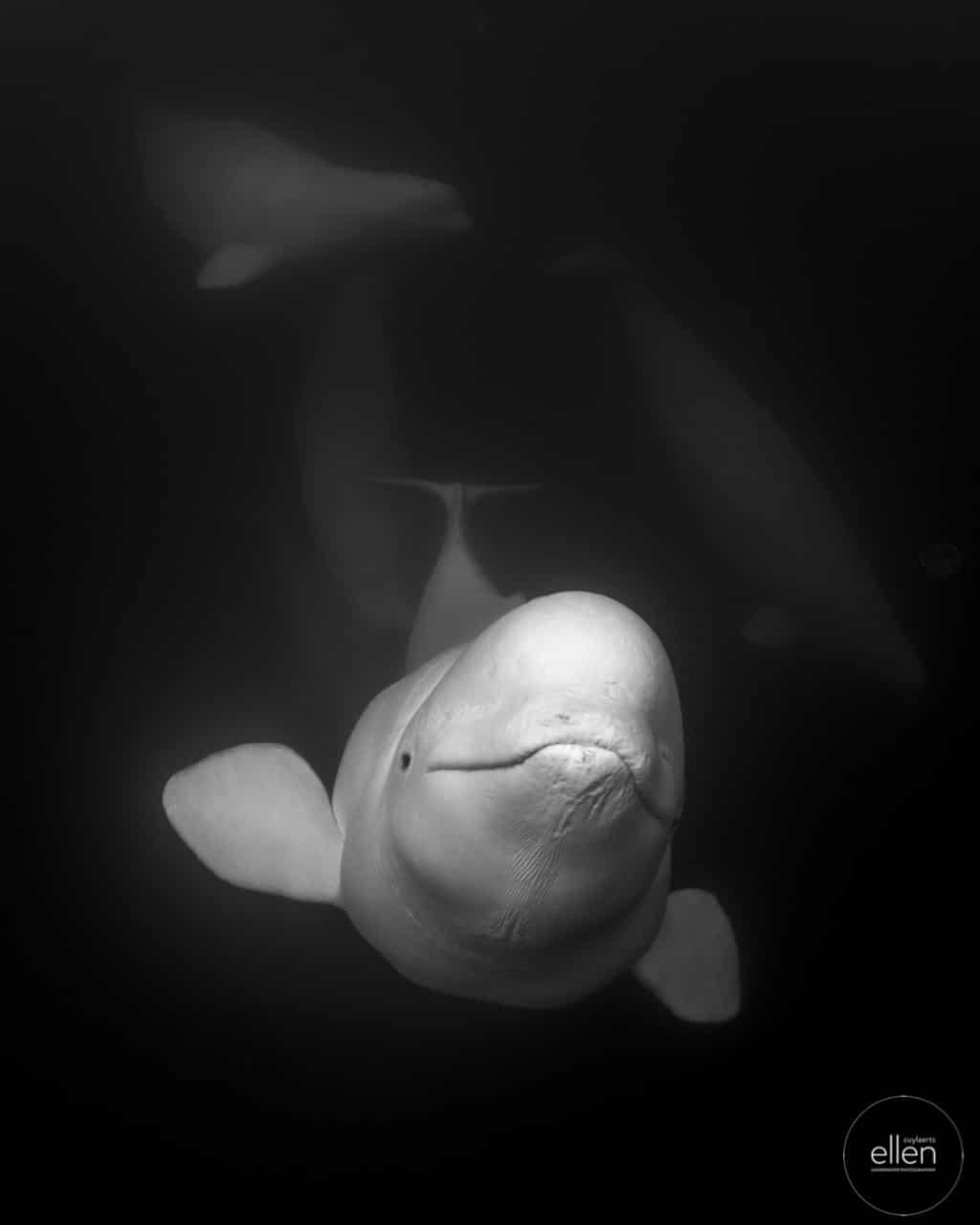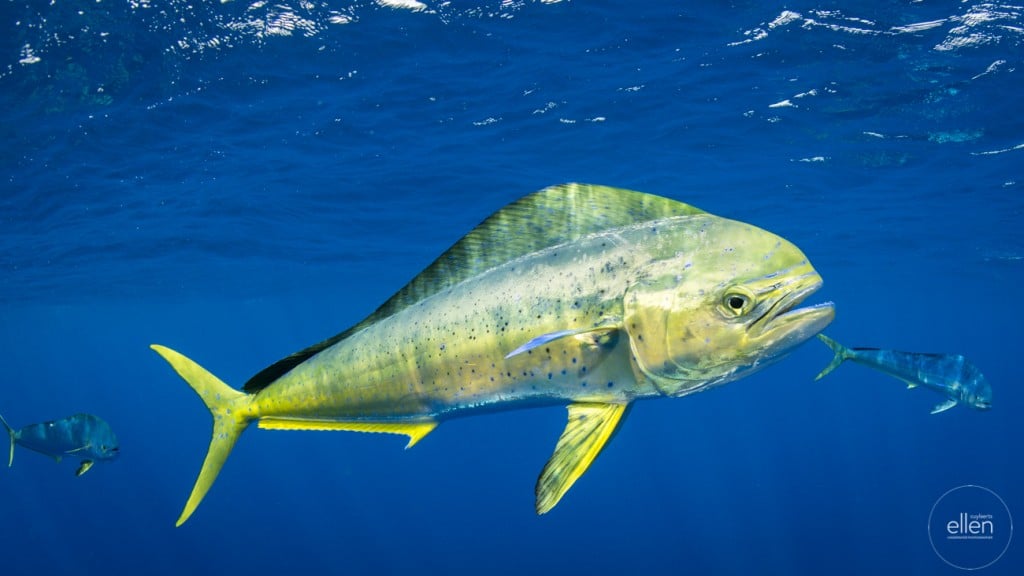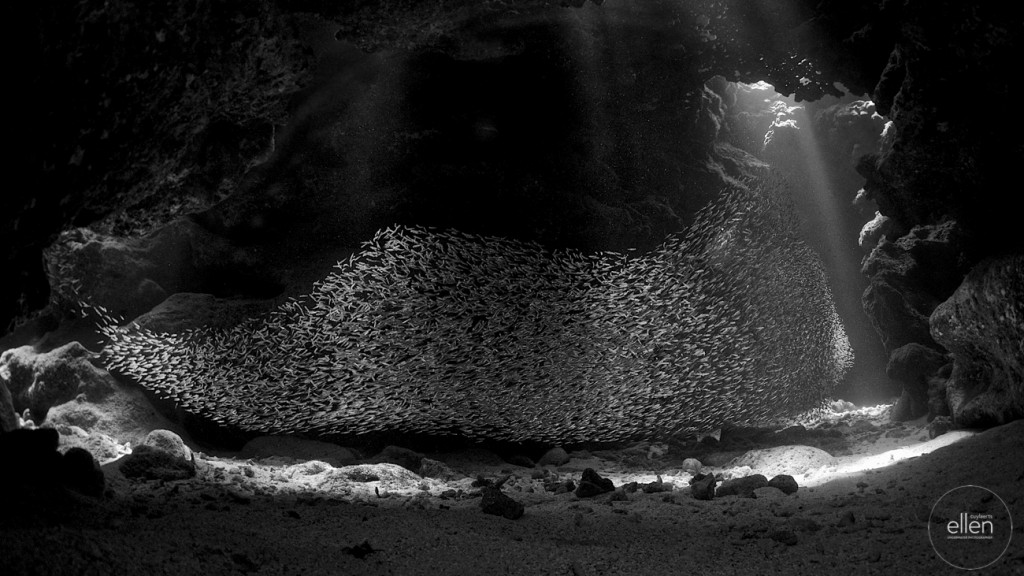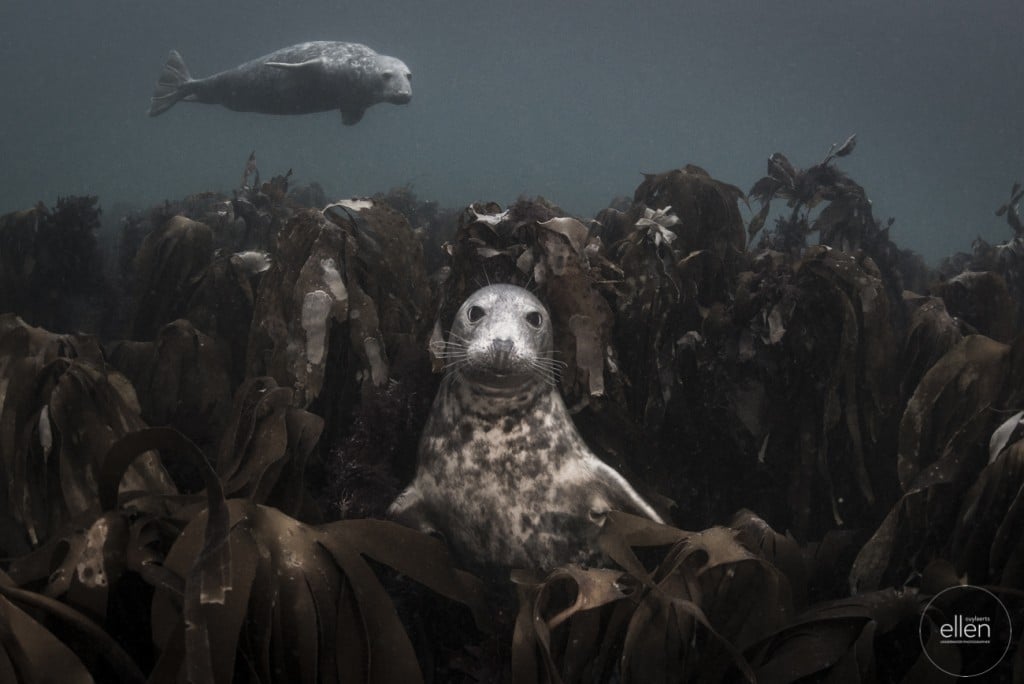Photo / Video News & Reviews
Scubaverse Underwater Photographer Interview: Ellen Cuylaerts
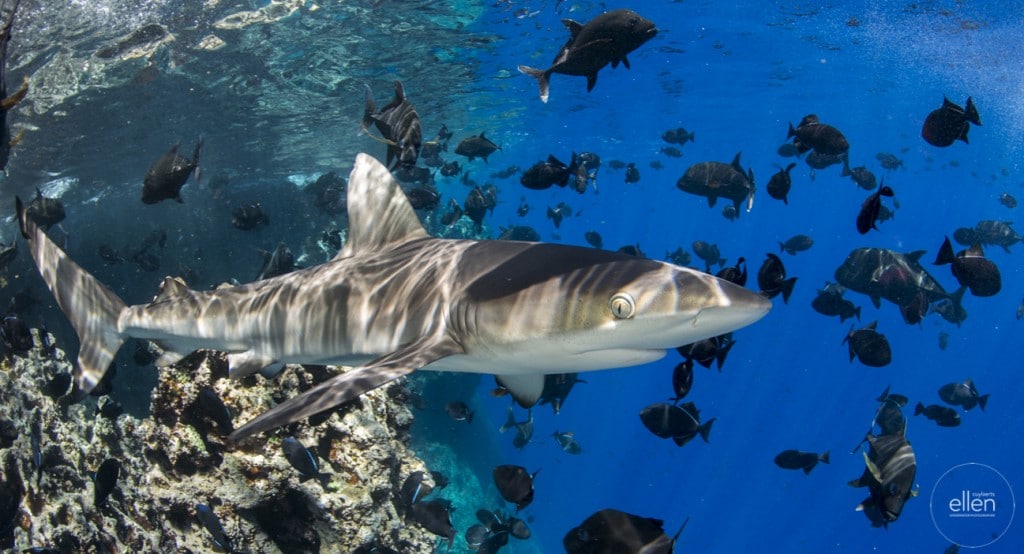
In an ongoing series, Scubaverse’s Underwater Photography Editors Nick and Caroline Robertson-Brown talk to underwater photographers from around the world that they admire. In this blog: Ellen Cuylaerts…
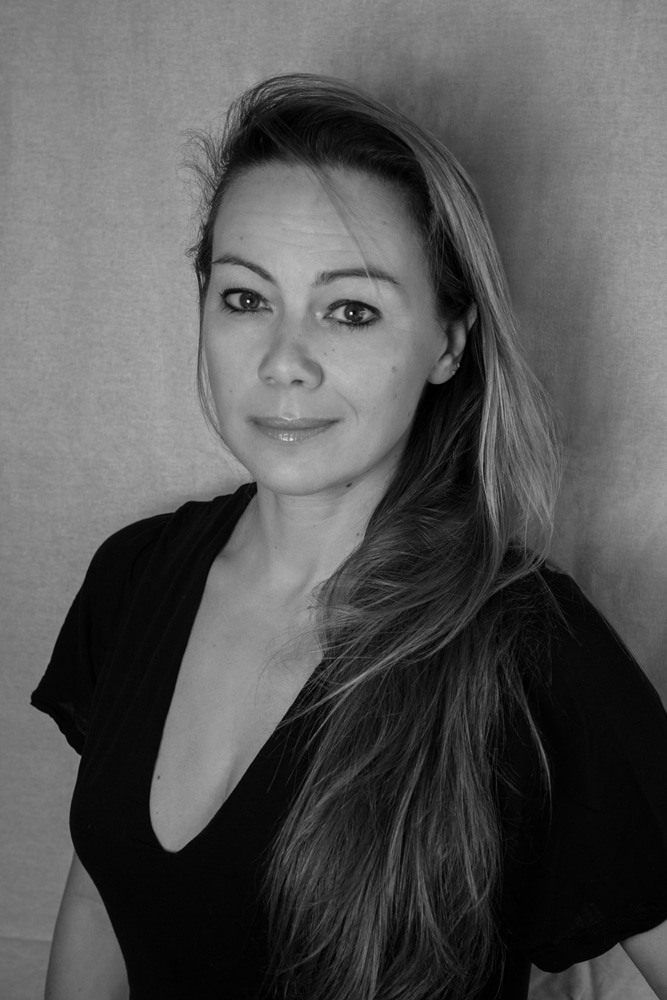 I relocated from Belgium to the Cayman Islands in 2009. I have a masters degree in modern history and education, but ended up working in IT until I decided to home-school my two gifted teenagers, relocating and taking up scuba diving in June 2011. Soon I became a Master Scuba Diver and combined it with photographing the wonders of the underwater world.
I relocated from Belgium to the Cayman Islands in 2009. I have a masters degree in modern history and education, but ended up working in IT until I decided to home-school my two gifted teenagers, relocating and taking up scuba diving in June 2011. Soon I became a Master Scuba Diver and combined it with photographing the wonders of the underwater world.
My main drive is shooting images that draw the viewer in, so an emotional bond is established between marine life and viewers that might not have a link with the underwater world. By creating an image that captures how I feel rather than what I see I hope to get people involved in protecting our blue planet. I’ve received awards for my pictures and was the 2013 World Champion in the yearly online underwater photo competition www.underwaterphotography.com. In June 2014, and again in 2015, I came first and second in the United Nations’ World Oceans Day Photo Competition. Those competitions have helped me to make my voice in conservation louder and also to mentor more people to use their images to contribute to education, preservation and awareness.
My work can be seen in exhibitions in Paris, St. Petersburg, Valencia, Marseille and New York. Last June I addressed Heads of State on World Oceans Day at the General Assembly of the United Nations highlighting the plight of photographers and filmmakers engaging in protection of the oceans. As a Fellow Explorer International I became a member of the Flag & Honors Committee of the Explorers Club, hence having a front seat at future explorations! I try to bring people together to work in a constructive way to be the change you want to see.
N&C: How did your underwater photography start?
EC: After relocating from Antwerp (Belgium) to the Caribbean, I decided to learn how to dive in 2011! I combined it with getting a new camera just for some me-time; I always wanted to study photography. I got a mirrorless EPL-II, kit lens, a housing and a strobe, the book “EPL-II for dummies”, an underwater photography course and I’ve never looked back.
N&C: What is your favourite u/w camera equipment (past & present) & why?
EC: My favorite setup is my Nikon D800 with a 16mm Nikkor fisheye lens and two sola video lights just in case I need extra light.
Shooting with a fixed fisheye lens makes you very aware of animal behavior, and the contact you need before you can even attempt a shot. Everything looks further away, you have to anticipate your approach taking light and behavior into account, and get as close as possible (otherwise your subject seems very far away). Most of the time shooting with the fisheye lens for big animal encounters can be a gamble. If you can’t get close, your shot will be less engaging. But if you can get close or the animal reveals itself in a great pose, a fisheye lens creates a depth that’s hard to create with any other lens. Be aware though to get yourself and your lens into the right position without harassing wildlife or damaging the environment, as every cm of your camera position counts in avoiding distortion of the subject.
N&C: What would be your advice to anyone new to underwater photography?
EC: Control your buoyancy at all times, only then start taking images. No picture is worth damaging the environment, marine life or yourself. Be a confident and aware diver and a good buddy. Don’t chase images but work on an image while keeping control of your dive. Observe, enjoy, think about whether it’s even worth attempting to take the image (is the background, the negative space interesting, the animal in a good position etc…) or if it would give you more joy to just watch behavior. Keep studying: diving AND photography. Simplify in extreme environments.
N&C: What, or who, has been your single biggest inspiration for your underwater photography?
EC: Brian Skerry, since his image of a harp seal in the water and the article in National Geographic, touched my heart years before I got into diving. When a print was auctioned at Christies some years ago, I even bought it and it’s on my wall in my office inspiring me every day. I was lucky and privileged to visit the ice floes in the Gulf of St. Lawrence where that image was taken twice and the fate of the harp seal pups every year depends on the ice but the decline in ice and the ‘big thaw’ are a sad reality and the harp seals to me are a symbolic ‘eyes of climate change’.
N&C: What image are you most proud of and why?
EC: The image I’m most proud of is ‘The elements’. It’s a Black and White image taken in a grotto with only natural light. It depicts a stream of silversides lit by the sun rays coming into the grotto at noon. That image took me patience, persistence (I saw the image happening before my eyes and almost got my settings dialed in when a group of divers swam through and I kept preparing just in case the school of fish would get back together and the stirred up sand would settle. It took me 50 more minutes of waiting), knowledge of light and photography. The moment I took the final image in raw, I could imagine how it would look after processing and after uploading it, I had the final version processed in two minutes. I took the image in the summer of 2013 and that was the moment I realized I was not just taking images but I knew what I was doing. I became a photographer.
N&C: Where is your favourite dive location, and is it for the photography?
EC: My favorite dive location is….haha UK! I’m totally crazy about your green waters, the cold, kelp, and friendly seals. I’ve visited Lundy during bad weather and sadly saw no seals but two visits to the Farne Islands are still putting a smile on my face. High on my list are diving the Scilly Isles and Hebrides. I think it’s the combination of raw nature, culture and history that will always attract me to the UK. Even if you have weather days on a trip, there’s so much to see and do (for me castles and hikes are all I need when I can’t go in the water).
N&C: What are you views on marine life manipulation, moving subjects?
EC: I have an ethical issue with moving subjects and I even have a hard time taking staged shots with divers. Moving marine life for a shot is wrong. The sad thing is it happens a lot and mostly by people who have no idea about animal behavior. Competitions and magazines should all take a stand and ban photographers with bad practices (also the ones standing on coral…or more generally, those not aware of their environment). Photographers and filmmakers are first hand witnesses of the underwater world and should act like best ambassadors in my opinion. Staged shots: that’s more a personal thing. I want to capture the moment and I prefer to catch it when it’s not expected as it feels more true. That being said, I have some ideas where I’ll have to give directions to divers and it will be my own biggest challenge to communicate what I feel before being in the water.
N&C: What do you look for when you are making your images?
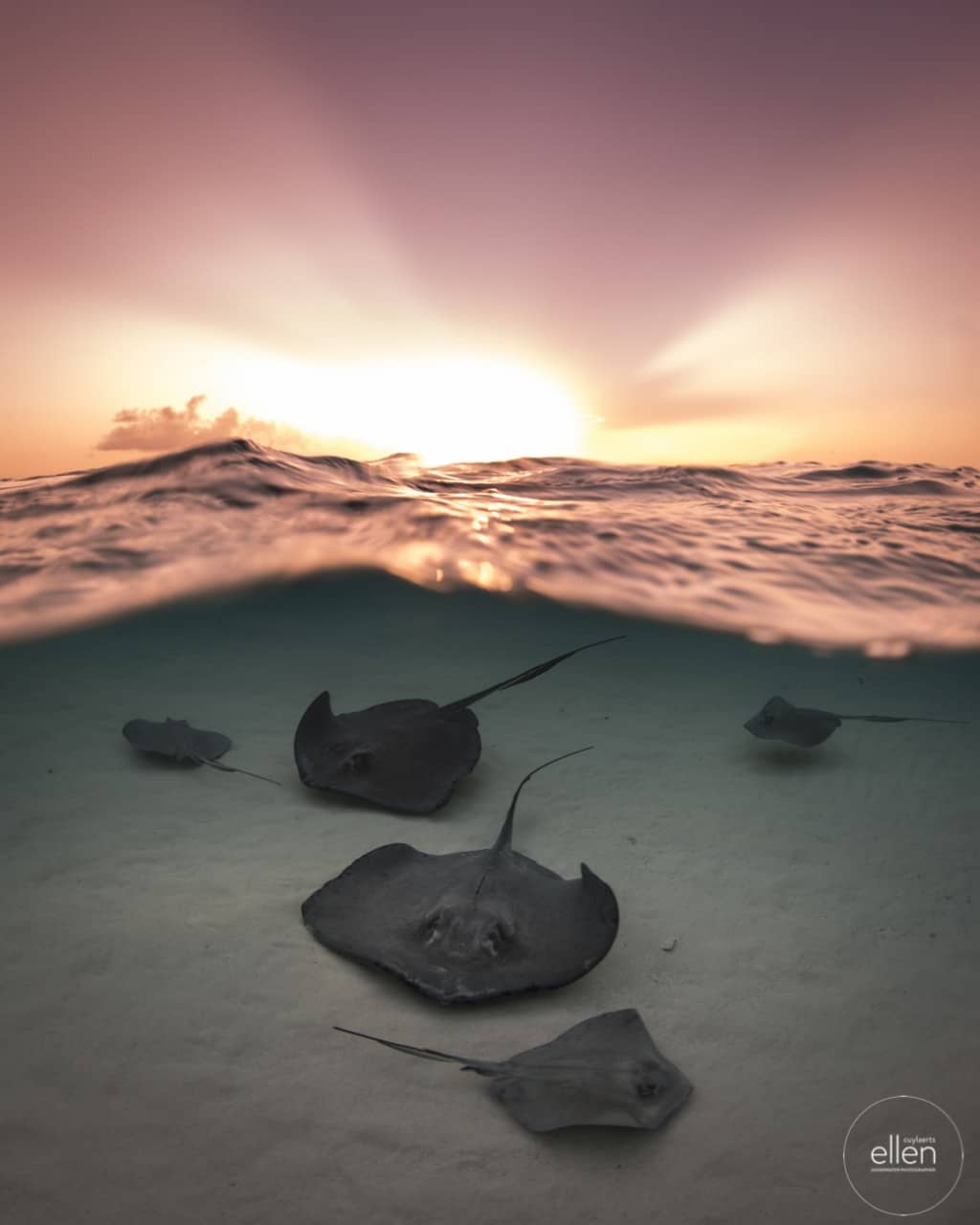 EC: Serenity in chaos, purity in expression. Something has to move me: light or motion or contact. I can spend lots of time in the ocean just enjoying the effects of salt water, without even an attempt to take an image. Yet I’m always prepared for the unexpected, dialing into my settings, taking a test shot, looking around, admiring sun rays or the shade of clouds. There’s always something that can sparkle your inspiration. Beauty is everywhere.
EC: Serenity in chaos, purity in expression. Something has to move me: light or motion or contact. I can spend lots of time in the ocean just enjoying the effects of salt water, without even an attempt to take an image. Yet I’m always prepared for the unexpected, dialing into my settings, taking a test shot, looking around, admiring sun rays or the shade of clouds. There’s always something that can sparkle your inspiration. Beauty is everywhere.
N&C: What motivates you to take u/w photos?
EC: My main drive is to contribute to awareness about the importance of the oceans to our planet, to the animal world and to mankind, by evoking emotions in the viewer. I’ve just returned from the opening of a group exhibition in New York and to be able to bring these nature images to people living in a buzzing city and to start a dialogue about the challenges regarding pollution and climate change, is very rewarding. Every person that changes his behavior because of looking at a nature documentary or a wildlife image, is a necessary win.
The clock is ticking and the scale is getting very unbalanced. There is no time to waste.
N&C: If you could photograph any one thing/place what or where would that be?
EC: Narwhals while diving on a rebreather in the arctic waters are my ‘unicorn’ dream and I will make that happen ;-).
To find out more about Ellen, visit her website by clicking here.
Blogs
Diver Discovering Whale Skeletons Beneath Ice Judged World’s Best Underwater Photograph
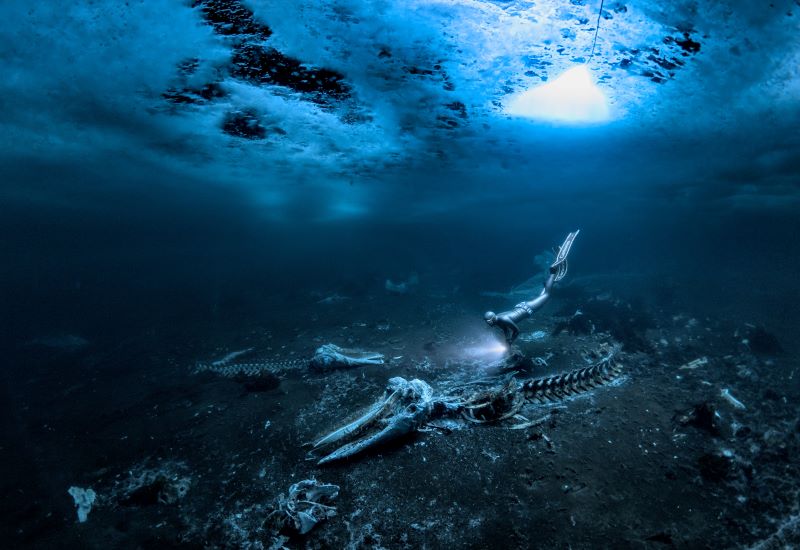
An emotive photograph showing a freediver examining the aftermath of whaling sees
Alex Dawson from Sweden named Underwater Photographer of the Year 2024. Dawson’s
photograph ‘Whale Bones’ triumphed over 6500 underwater pictures entered by underwater
photographers from around the world.
“Whale Bones was photographed in the toughest conditions,” explains chair of judging
panel Alex Mustard, “as a breath-hold diver descends below the Greenland ice sheet to bear
witness to the carcasses. The composition invites us to consider our impact on the great
creatures of this planet. Since the rise of humans, wild animals have declined by 85%. Today,
just 4% of mammals are wildlife, the remaining 96% are humans and our livestock. Our way
needs to change to find a balance with nature.”
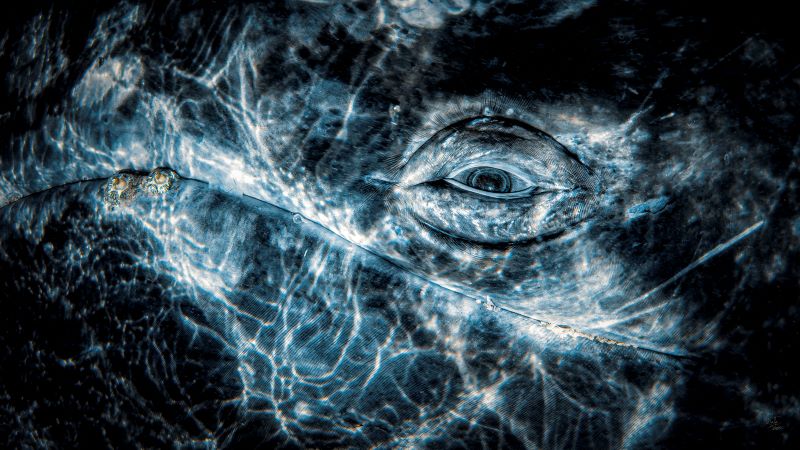
Photo: Rafael
Fernandez Caballero
Whales dominated the winning pictures this year with Spanish photographer Rafael
Fernandez Caballero winning two categories with his revealing photos of these ocean giants:
a close up of a grey whale’s eye and an action shot of a Bryde’s whale engulfing an entire bait
ball, both taken in Magdalena Bay, Baja California, Mexico. Fernandez Caballero took ‘Grey
Whale Connection’ while drifting in a small boat, holding his camera over the side in the water
to photograph the curious whale. ‘The End Of A Baitball’ required Fernandez Caballero to dive
down and be in exactly the right place at the moment the whale lunged. “The photo shows
the high speed attack,” he said, “with the whale engulfing hundreds of kilograms of sardines
in one bite — simply unforgettable to see predation on such a scale.”
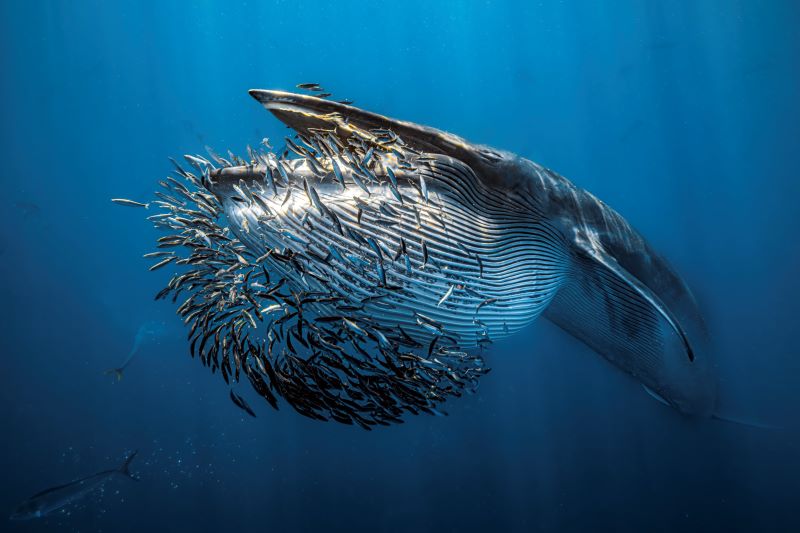
Photo: Rafael
Fernandez Caballero
Lisa Stengel from the United States was named Up & Coming Underwater Photographer of the Year 2024 for her image of a mahi-mahi catching a sardine, in Mexico. Stengel used both a very fast shutter speed and her hearing to catch the moment. “If you listen there’s an enormous amount of sound in the ocean,” she explained. “The action was too fast to see, so I honed in on the sound of the attacks with my camera to capture this special moment.”
“It is such an exciting time in underwater photography because photographers are capturing such amazing new images, by visiting new locations and using the latest cameras,”
commented judge Alex Mustard. “Until this year I’d hardly ever see a photo of a mahi mahi,
now Lisa has photographed one hunting, action that plays out in the blink of an eye.”
The Underwater Photographer of the Year contest is based in the UK, and Jenny Stock,
was named as British Underwater Photographer of the Year 2024 for her image “Star
Attraction”, which finds beauty in species of British wildlife that are often overlooked.
Exploring the west coast of Scotland, Stock explained “in the dark green depths my torch
picked out the vivid colours of a living carpet of thousands of brittle stars, each with a
different pattern. I was happily snapping away, when I spotted this purple sea urchin and I
got really excited.”
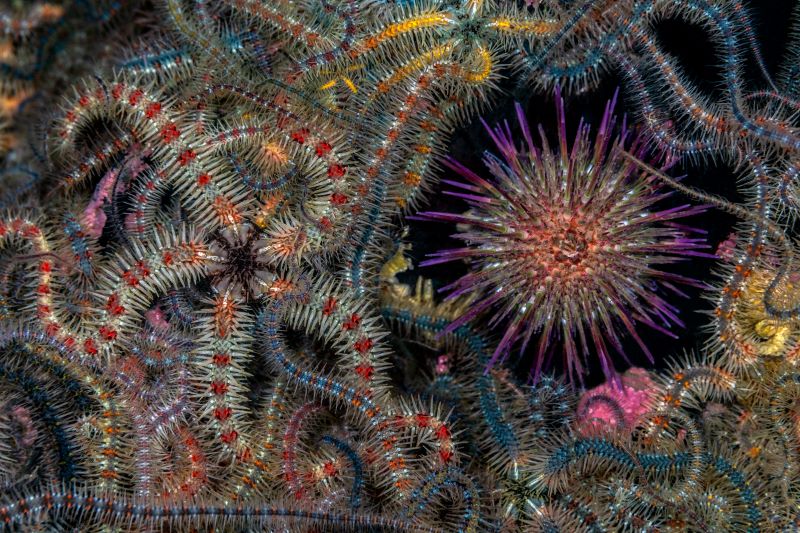
Photo: Jenny Stock
In the same contest, Portuguese photographer, Nuno Sá, was named ‘Save Our Seas
Foundation’ Marine Conservation Photographer of the Year 2024, with his photo ‘Saving
Goliath’, taken in Portugal. Sá’s photo shows beachgoers trying to save a stranded sperm
whale. The picture gives us hope that people do care and want to help the oceans, but also
warns us that bigger changes are needed. “The whale had been struck by a ship and its fate
was sealed,” explains Sá. “An estimated 20,000 whales are killed every year, and many more
injured, after being struck by ships-and few people even realise that it happens.”
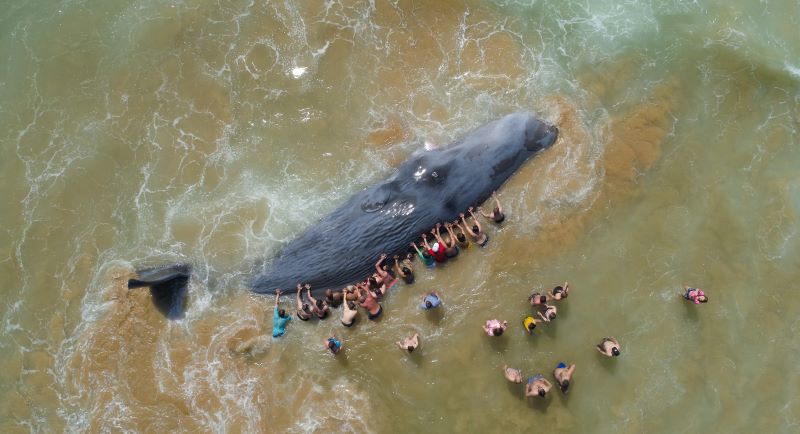
Photo: Nuno Sá
More winning images can be found at www.underwaterphotographeroftheyear.com.
About Underwater Photographer of the Year
Underwater Photographer of the Year is an annual competition, based in the UK, that celebrates photography beneath the surface of the ocean, lakes, rivers and even swimming pools, and attracts entries from all around the world. The contest has 13 categories, testing photographers with themes such as Macro, Wide Angle, Behaviour and Wreck photography, as well as four categories for photos taken specifically in British waters. The winners were announced in an award ceremony in Mayfair, London, hosted by The Crown Estate. This year’s UPY judges were experienced underwater photographers Peter Rowlands, Tobias Friedrich and Dr Alexander Mustard MBE.
Header image: Underwater Photographer of the Year 2024 winner Alex Dawson
News
World’s Best Underwater Photographers Unveil Breathtaking Images at World Shootout 2023
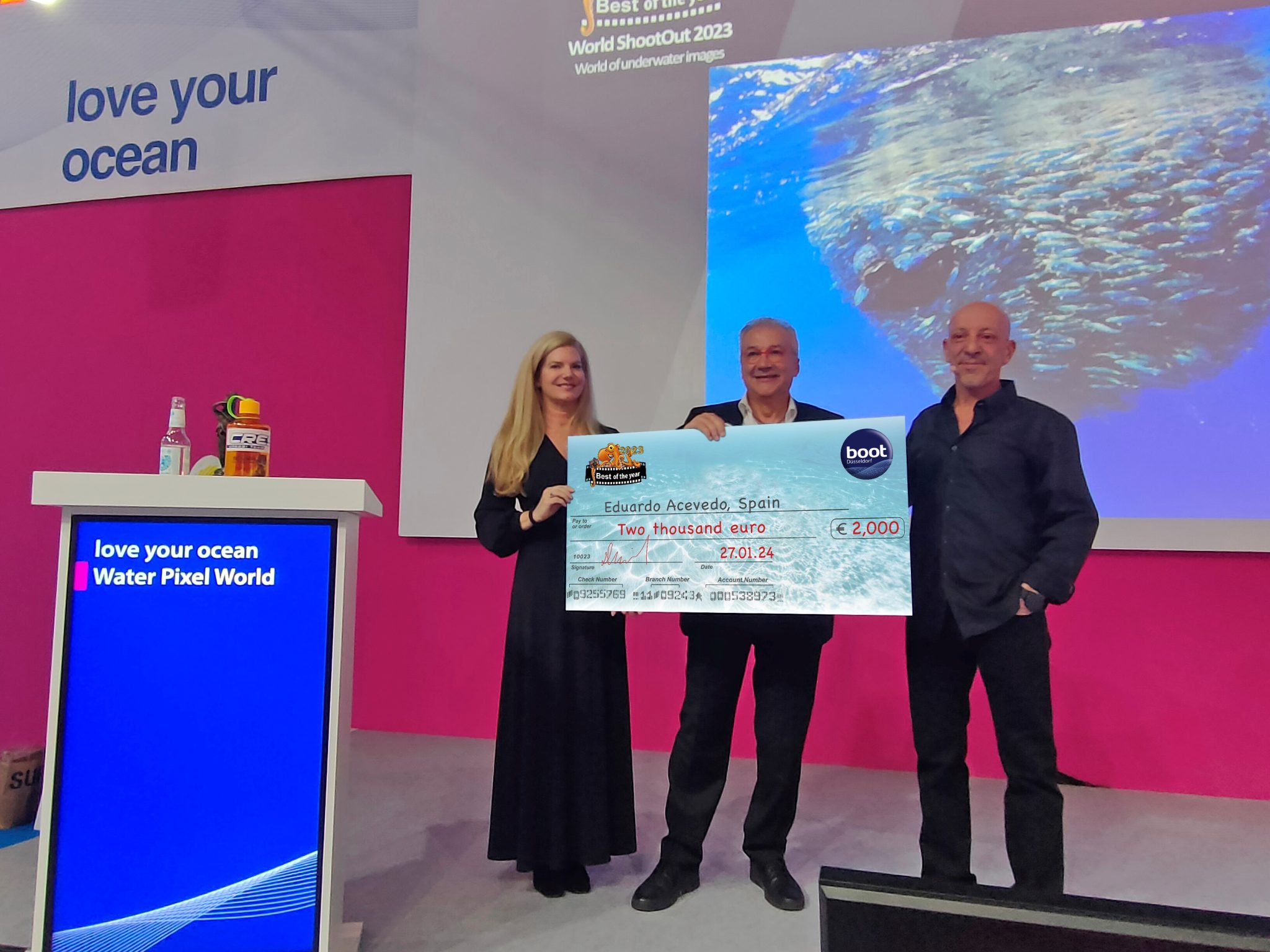
The winners of the prestigious World Shootout 2023 underwater photography competition were announced at this year’s BOOT Show, captivating audiences at the world’s largest diving and water sports exhibition in Dusseldorf, Germany. Hundreds of photographers from 54 countries competed across nine categories, pushing the boundaries of creativity and technical skill.
Grand Prize Winners
- Picture of the Year: Spanish photographer Eduardo Acevedo “secured” the top Honor with the prestigious prize the “boot Dusseldorf Director’s Prize, earning an Andromeda statuette and a €2,000 cash prize.
- Best 5 Images Portfolio: Luc Rooman from Belgium triumphed in this category, winning a dream 4-week diving trip for two to Papua New Guinea, valued at $18,900.
- Amateur Photographer: Alexandra Ceurvorst from the USA impressed the judges with her talent, taking home the 1,000 € cash prize award.
Celebrating Diversity and Innovation
This year’s competition saw 11,680 entries from 964 photographers, showcasing a remarkable spectrum of skills and perspectives. From the intricate wonders of Macro photography to the beauty of “Black Water”, the “Underwater Fashion” category added a touch of artistry and innovation, while the ever-important ” Environmental & Conservation” category served as a powerful reminder of the need to protect these fragile ecosystems.
Looking Ahead: AI and Ocean Conservation
World Shootout founder and producer David Pilosof unveiled an exciting addition for the 2024 competition: this year the Environmental category will be focusing on the impact of plastic on our oceans and future.
This category will embrace the potential of AI or other editing software as a tool to amplify the conservation message.
Entrants will submit campaigns of three original underwater photographs dealing with plastic pollution, along with their final AI assistance processing. This innovative approach encourages artistic expression while raising awareness about a critical environmental issue.
Explore the Stunning Collection
Discover the complete album of competition entries by clicking here.
For Low-resolution photos of finalist entries in eight categories, click here.
-

 News3 months ago
News3 months agoHone your underwater photography skills with Alphamarine Photography at Red Sea Diving Safari in March
-

 News3 months ago
News3 months agoCapturing Critters in Lembeh Underwater Photography Workshop 2024: Event Roundup
-

 Marine Life & Conservation Blogs2 months ago
Marine Life & Conservation Blogs2 months agoCreature Feature: Swell Sharks
-

 Blogs2 months ago
Blogs2 months agoMurex Resorts: Passport to Paradise!
-

 Blogs2 months ago
Blogs2 months agoDiver Discovering Whale Skeletons Beneath Ice Judged World’s Best Underwater Photograph
-

 Gear Reviews3 months ago
Gear Reviews3 months agoGear Review: Oceanic+ Dive Housing for iPhone
-

 Marine Life & Conservation2 months ago
Marine Life & Conservation2 months agoSave the Manatee Club launches brand new webcams at Silver Springs State Park, Florida
-

 News3 months ago
News3 months agoWorld’s Best Underwater Photographers Unveil Breathtaking Images at World Shootout 2023


